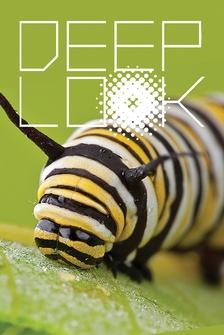(bees buzzing) - Hi, I'm Mike Barry, and I live in the suburbs of New York City.
I'm a backyard beekeeper, and I'm taking advantage of the stay-at-home quarantine to spend more time with my honeybees.
Like most of you, my life is filled with the usual stresses and anxieties.
But during this pandemic, I can count on my bees to help me stay calm.
Come join me while I pay a visit to my 20,000 girlfriends.
As I approach my hives, I feel an overwhelming sense of calm descend.
It's a magical feeling, a zen-like atmosphere.
I'm entering another world.
(bees buzzing) It sharpens my concentration and makes me slow my pace way down.
I love it.
Honeybees are fascinating.
Their natural habitat is usually a hollow tree in the forest, but people have been using these wooden boxes to give them a home since around 1850.
You've probably noticed them out in the countryside, but now they are common everywhere, like here in my backyard.
A hive has only one small entrance, where the bees come and go.
They get all their nourishment from going out foraging for nectar and pollen from flowers.
Ultimately, their honey will taste like the flowers they visit.
Before I disturb them, I put in a bit of smoke to calm them down.
Each hive is its own isolated community, and the community mentality is what fascinates me the most.
There are maybe 15,000 bees inside, but people always refer to the hive as a singular entity, like the hive decides when to swarm or the hive decides when to replace the queen.
Inside this box is a very complicated universe.
They don't have a board of directors or elected officials, but from birth, each bee knows their job and performs it for the good of all.
Remember, it's completely dark inside except for the small amount of light that comes in through the entrance, and the bees are able to communicate in intricate ways, mainly by pheromones and smell.
There is one queen and 10,000 to 20,000 worker bees, all female, who do the heavy lifting.
About 10% of the population are male drones, who get a bad wrap because they don't help out with the basic running of the hive.
Hm ... sound familiar?
You put empty frames inside the hives, and the bees make all these hexagonal cells out of wax they excrete.
Again, this is such an unbelievable undertaking if you think about it.
How do they know how to make each cell the perfect size and shape?
These cells are used for everything they need: for nectar, which becomes honey, pollen ... and for the eggs that the queen lays.
It is such an elegant system.
These bees set a good example for me in how to cope with the coronavirus pandemic.
They know what they need to do to survive.
They know they have to rely on one another to benefit the whole, and they exist, like a lot of that natural world, without regard to what is swirling around them.
It's a pretty complicated and intricate system, but at it's essence it is pure and simple.
Did you know that a third of the food we eat needs to be pollinated by honeybees?
You've probably heard that honeybees are not doing well; they are under attack by insecticides, parasites, loss of habitat, and now these Asian murder hornets.
Keeping bees is my small way of contributing to their survival.
It's easy and fun, and it's nothing to be intimidated by.
You can do it almost anywhere, even on urban rooftops.
And the honey tastes even sweeter when you've had a hand in making it.













